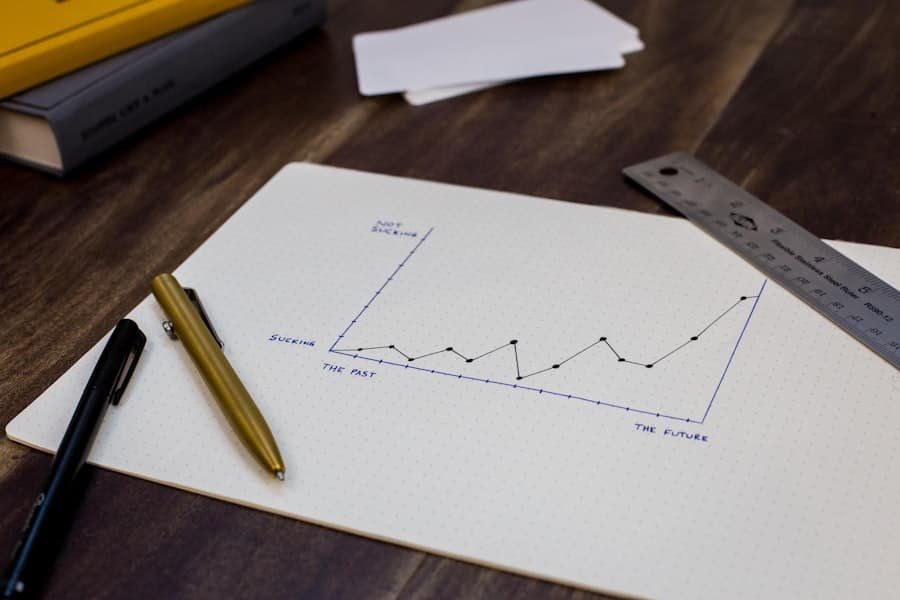Rising interest rates have been a significant economic factor in recent years. The Federal Reserve has implemented gradual rate increases to manage inflation and promote economic growth. These changes have wide-ranging effects on consumers’ financial situations, impacting various forms of debt such as mortgages, credit cards, auto loans, and student loans.
Understanding these impacts is crucial for individuals to effectively manage their finances in a changing economic environment. The Federal Reserve’s interest rate decisions have broad economic implications. Higher rates increase borrowing costs, potentially reducing consumer spending and slowing economic growth.
Conversely, they can also lead to improved returns on savings and investments, benefiting those with savings accounts or investment portfolios. The Federal Reserve aims to balance these factors to maintain economic stability. As interest rates fluctuate, consumers need to be aware of how these changes affect their personal finances.
This awareness enables them to make informed decisions about borrowing, saving, and investing. Adapting financial strategies to the current interest rate environment is essential for maintaining financial health and achieving long-term financial goals.
Key Takeaways
- Rising interest rates can lead to increased borrowing costs for consumers.
- Mortgages and home equity loans may become more expensive as interest rates rise.
- Credit card debt can become more burdensome with higher interest rates.
- Auto loans and leases may see higher monthly payments with rising interest rates.
- Student loans may become more costly to repay as interest rates increase.
- Consumers should consider the impact of rising interest rates when taking out personal loans.
- Strategies for managing debt and spending should be adjusted to account for rising interest rates.
Impact on Mortgages and Home Equity Loans
The Impact on Existing Homeowners
For existing homeowners with adjustable-rate mortgages, rising interest rates can lead to higher monthly payments. Additionally, those with home equity loans or lines of credit may see their borrowing costs increase, making it more expensive to tap into their home’s equity for things like home improvements or debt consolidation.
The Broader Impact on the Housing Market
Higher borrowing costs can lead to decreased demand for homes, which can in turn lead to lower home prices. This can be a double-edged sword for homeowners, as they may see the value of their homes decrease while also facing higher borrowing costs.
Navigating Rising Interest Rates
As a result, it’s essential for homeowners to carefully consider their options when it comes to mortgages and home equity loans in a rising interest rate environment. Exploring fixed-rate mortgage options or considering alternative financing options may be beneficial for those looking to purchase a home or tap into their home’s equity.
Effects on Credit Card Debt

Rising interest rates can also have a significant impact on credit card debt. Credit card interest rates are often variable, meaning they can fluctuate with changes in the overall interest rate environment. As a result, consumers carrying balances on their credit cards may see their borrowing costs increase as interest rates rise.
This can lead to higher monthly payments and longer repayment periods for those carrying high levels of credit card debt. Additionally, those who rely on credit cards for everyday expenses may find themselves facing higher costs as interest charges add up over time. For consumers with credit card debt, it’s important to be proactive in managing their balances and borrowing costs.
This may involve exploring balance transfer options to lower-interest credit cards or seeking out personal loans with lower interest rates to consolidate high-interest credit card debt. It’s also important for consumers to be mindful of their spending habits and to avoid taking on additional debt as interest rates rise. By being proactive and strategic in managing credit card debt, consumers can minimize the impact of rising interest rates on their overall financial well-being.
Influence on Auto Loans and Leases
Rising interest rates can also impact auto loans and leases. As interest rates increase, the cost of borrowing for a vehicle purchase also goes up. This means that consumers looking to finance a new car may face higher monthly payments or may need to consider more affordable vehicle options.
Additionally, those with existing auto loans may see their borrowing costs increase over time, leading to higher overall costs for vehicle ownership. For those considering leasing a vehicle, rising interest rates can also impact lease terms and monthly payments. Higher interest rates can lead to higher lease payments and may make leasing less attractive compared to purchasing a vehicle outright.
As a result, consumers in the market for a new vehicle should carefully consider their financing options and be mindful of how rising interest rates can impact the overall cost of vehicle ownership.
Changes in Student Loans
Rising interest rates can also affect student loans, both federal and private. For federal student loans, interest rates are set by Congress and are fixed for the life of the loan. However, for new borrowers, these rates are adjusted annually based on the 10-year Treasury note yield.
As a result, rising interest rates can lead to higher borrowing costs for new federal student loan borrowers. For those with existing federal student loans, rising interest rates will not impact their current rates but may affect future borrowing. For private student loans, interest rates are often variable and can fluctuate with changes in the overall interest rate environment.
This means that borrowers with private student loans may see their borrowing costs increase as interest rates rise. This can lead to higher monthly payments and longer repayment periods for those carrying high levels of student loan debt.
Considerations for Personal Loans

The Increasing Cost of Borrowing
As interest rates rise, the cost of borrowing for a personal loan also increases. This means that consumers seeking personal loans may face higher borrowing costs and may need to explore alternative financing options or delay their borrowing needs.
Managing Personal Loan Needs
For those considering personal loans, it’s essential to carefully evaluate their borrowing needs and explore all available options before taking on additional debt. This may involve comparing loan offers from multiple lenders, exploring fixed-rate loan options, or seeking out alternative financing options such as home equity loans or lines of credit.
Minimizing the Impact of Rising Interest Rates
By being proactive and strategic in managing personal loan needs, consumers can minimize the impact of rising interest rates on their overall financial well-being.
Strategies for Managing Debt and Spending
In a rising interest rate environment, it’s important for consumers to develop strategies for managing debt and spending in order to minimize the impact of higher borrowing costs. This may involve exploring refinancing options for existing debts, such as mortgages or student loans, in order to secure lower interest rates and reduce overall borrowing costs. It may also involve exploring balance transfer options for high-interest credit card debt or seeking out personal loans with lower interest rates to consolidate existing debts.
In addition to managing debt, it’s also important for consumers to be mindful of their spending habits and to avoid taking on additional debt as interest rates rise. This may involve creating a budget and sticking to it in order to prioritize essential expenses and minimize discretionary spending. It may also involve exploring ways to increase income or reduce expenses in order to free up additional funds for debt repayment.
Overall, rising interest rates have the potential to impact nearly every aspect of personal finance, from mortgages to credit card debt, auto loans to student loans, and personal loans. By being proactive and strategic in managing debt and spending, consumers can minimize the impact of rising interest rates on their overall financial well-being and make informed decisions about borrowing, saving, and investing in a changing interest rate environment.
If you’re interested in learning more about how rising interest rates can impact the economy, check out this article on The Econosphere’s blog “The Impact of Interest Rates on Investment and Savings”. This article delves into how changes in interest rates can affect both consumer and business behavior, providing a comprehensive look at the broader economic implications of interest rate fluctuations. Understanding these dynamics can help individuals and businesses make more informed financial decisions in a changing interest rate environment.
FAQs
What are interest rates?
Interest rates are the cost of borrowing money, typically expressed as a percentage of the principal loan amount. They can be fixed or variable and are set by central banks or financial institutions.
How do rising interest rates affect consumer borrowing?
Rising interest rates can make borrowing more expensive for consumers. This means that the cost of taking out loans, such as mortgages, car loans, and personal loans, increases, leading to higher monthly payments and potentially reducing the amount of money consumers can borrow.
How do rising interest rates affect consumer spending?
Rising interest rates can lead to a decrease in consumer spending. As borrowing becomes more expensive, consumers may be less inclined to take out loans for big-ticket items like homes and cars, leading to a decrease in overall spending.
What are the potential impacts of rising interest rates on the economy?
Rising interest rates can slow down economic growth by reducing consumer spending and business investment. They can also lead to a decrease in housing market activity and a potential increase in loan defaults.
How can consumers mitigate the impact of rising interest rates?
Consumers can mitigate the impact of rising interest rates by paying down existing debt, considering fixed-rate loans, and being mindful of their overall borrowing and spending habits. Additionally, they can explore alternative financing options and seek financial advice to navigate the changing interest rate environment.








